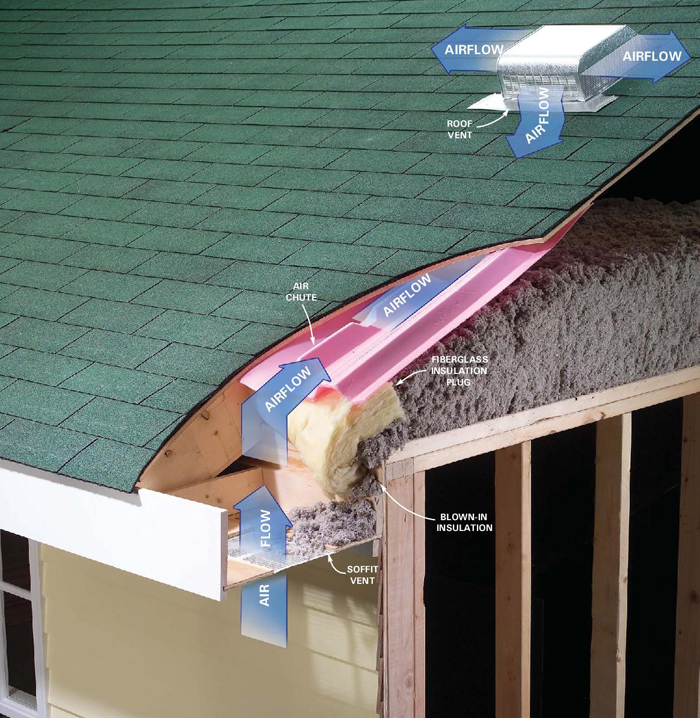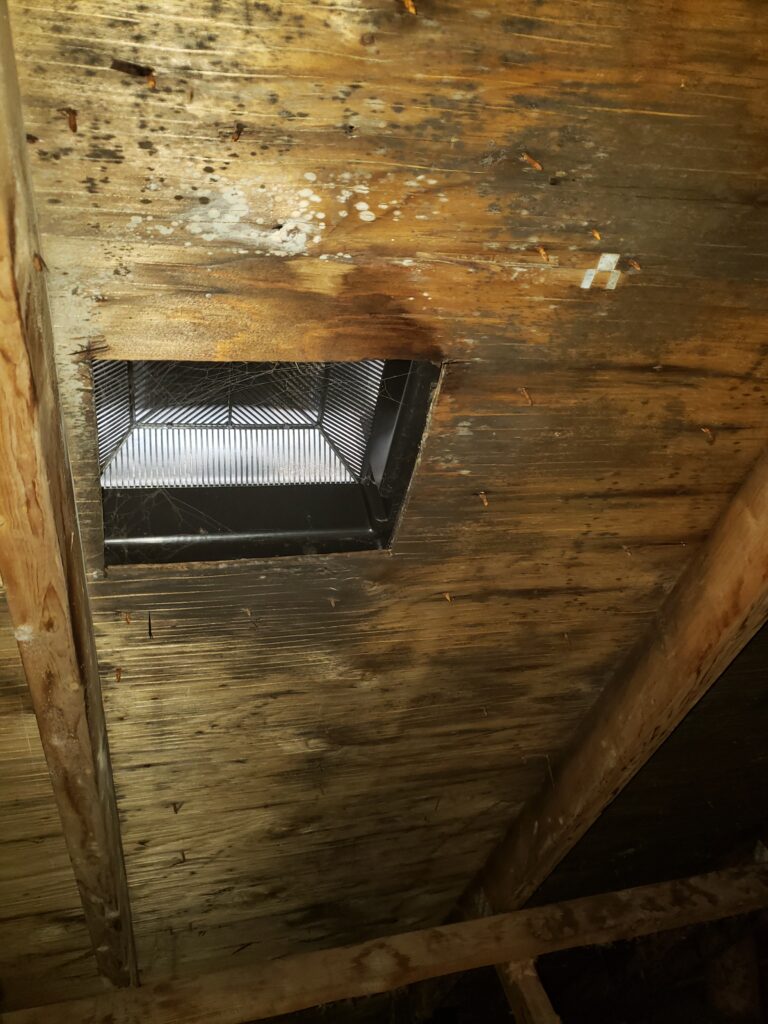Insulation is only half the battle; the other half is Ventilation!
Insulation is important, but ventilation can’t be overlooked too. If you have adequate ventilation in your home, your attic will remain dry throughout the winter, and your house will remain cool throughout the summer. On the other hand, it is not uncommon for homes to have problems with ventilation because they do not have adequate intake vents or exhaust vents for optimum attic ventilation airflow.
What is attic ventilation?
 | Soffit VentSoffit vents are the intake of the airflow moving up into the attic’s baffles air chute. A Fiberglass insulation batt is added to plug the gap and prevent blocking the soffit vent. | |
Baffle Air ChuteBaffles air chutes, also known as rafter vents, are necessary to ensure the blown-in insulation will not clog the soffit and allows the airflow to move upwards in the attic towards to roof vents. | ||
Roof VentRoof ventilators are the exhaust of the attic which allows the airflow to escape and ventilation to keep circulating. You need one ventilator per 300 sq ft of attic.
|
Moisture control is the key to preventing mould in your attic!
The elimination of excess moisture is essential to keep mould from growing in your attic. Your home will experience various issues as a direct result of inadequate ventilation. Mould is one of them!
Lack of ventilation will create multiple problems in your house.

During the summer:
Your attic will get extremely hot during the summer, which will cause the rest of your house to feel stuffy and will force your air conditioner to work constantly with little discernible effect. If there is no air circulation, the relative humidity will rise, making the conditions ideal for mould growth.
During the winter:
Condensation will form in your home’s attic throughout the winter because warm air from inside the house will mix with the cold air from outside. Mould will grow and cause roof rot within a few years if ventilation is not provided to maintain a balance between the hot and cold airflow.
Certainly, to prevent a mould issue in your attic, fix its ventilation. If your attic has a poor ventilation system, it will be prone to moisture problems when the weather gets hot or cold. Particularly, moisture could come through your roof if it is not well insulated, causing severe damage.
What are the signs to look out for?
There are many solutions to these issues overall, yet they all start with looking for signs of excess moisture and good ventilation. After all, if you ask any professional if there is a chance for moisture accumulation in your attic, they will tell you yes.
Therefore, suppose you have been living in your house for a while and have seen some problems arise. Undeniably, it’s probably a good time to check your attic for signs of good ventilation, like; if there are enough soffits, baffles in your attic and air ventilators on your roof. And, if you see mould growing in the attic on the wood, you need to contact your local insulation contractor. That way, you can take measures to avoid moisture build-up and mould growth before it becomes an issue. If this article has gotten you thinking and looking at your house differently, it did its job well!
Hopefully, the information above has made you aware and given you some insight into the steps necessary to minimize or eliminate mould growth in your attic. Please click here if you are interested in learning more about attic insulation.